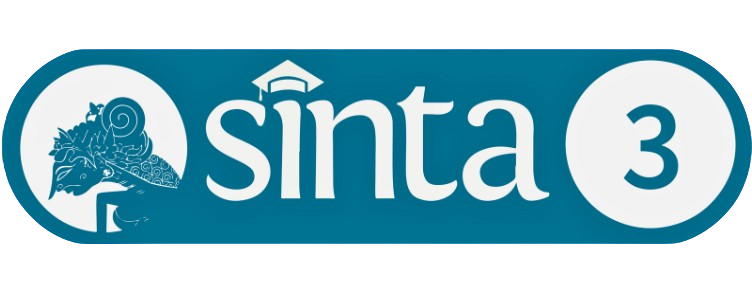Hubungan Sikap Terhadap Informasi Terkait Covid-19 Dengan Kecenderungan Perilaku Prososial Pengguna Media Sosial
Downloads
Melimpahnya informasi saat krisis berpotensi menyebabkan individu untuk berperilaku apapun yang dianggap tepat. Penelitian ini bertujuan untuk menguji hubungan antara sikap terhadap informasi terkait COVID-19 dengan kecenderungan perilaku prososial pada dewasa awal pengguna media sosial. Penelitian ini menggunakan metode kuantitatif. Sampel penelitian ini merupakan dewasa awal (18-40 tahun) pengguna media sosial. Sampel yang didapatkan dengan teknik voluntary sampling sebanyak 375 responden; 277 perempuan dan 98 laki-laki. Data dikumpulkan dengan teknik survei daring menggunakan skala sikap informasi COVID-19 dan Prosocial Tendencies Measurement. Uji korelasi dengan Pearson's Product Moment menunjukkan hubungan positif dan sedang antara sikap informasi COVID-19 dengan dimensi altruism (r(375)=.557; p<.001), compliant (r(375)=.564; p<.001), emotional (r(375)=.571; p<.001), public (r(375)=.54; p<.001), dan dire (r(375)=.563; p<.001), dan berkorelasi positif dan lemah pada dimensi anonymous (r(375)=.349; p<.001). Hasil penelitian ini mendukung penelitian sebelumnya yang menunjukkan sikap positif pengguna media sosial terhadap penyebaran informasi seputar krisis dapat menggerakkan perilaku kolektif.
Aknin, L. B., Barrington-Leigh, C. P., Dunn, E. W., Helliwell, J. F., Burns, J., Biswas-Diener, R., Kemeza, I., Nyende, P., Ashton-James, C. E., & Norton, M. I. (2013). Prosocial spending and well-being: Cross-cultural evidence for a psychological universal. Journal of Personality and Social Psychology, 104(4), 635–652.
Allport, G. W. (1935). Attitudes. In C. Murchison (Ed.), Handbook of social psychology (pp. 798–844). Clark University Press.
Alvis, L., Douglas, R., Shook, N., & Oosterhoff, B. (2020). Associations between Adolescents' Prosocial Experiences and Mental Health During the COVID-19 Pandemic. May. https://doi.org/10.31234/osf.io/2s73n
Ardi, R. (2020). Infodemik Di Saat Pandemi. HIMPSI Himpunan Psikologi Indonesia http://himpsi.or.id/blog/materi-edukasi-covid-19-5/post/infodemik-di-saat-pandemi-124
Azwar, S. (2013). Metode Penelitian. Pustaka Pelajar.
Barari, S., Caria, S., Davola, A., Falco, P., Fetzer, T., Fiorin, S., Hensel, L., Ivchenko, A., Jachimowicz, J., King, G., Kraft-Todd, G., Ledda, A., MacLennan, M., Mutoi, L., Pagani, C., Reutskaja, E., Roth, C., & Slepoi, F. R. (2020). Evaluating COVID-19 public health messaging in Italy: Self-reported compliance and growing mental health concerns. In MedRxiv (p. 2020.03.27.20042820). https://doi.org/10.1101/2020.03.27.20042820
Bernard, R., Bowsher, G., Sullivan, R., & Gibson-Fall, F. (2020). Disinformation and Epidemics: Anticipating the Next Phase of Biowarfare. Health Security, 19(1), 3-12. https://doi.org/10.1089/hs.2020.0038
Bird, D., Ling, M., & Haynes, K. (2012). Flooding Facebook-the use of social media during the Queensland and Victorian floods. The Australian Journal of Emergency Management, 27(1), 27–33. https://search.informit.org/doi/10.3316/ielapa.046814266005608
Carlo, G., & Randall, B. A. (2002). The Development of a Measure of Prosocial Behaviors for Late Adolescents. Journal of Youth and Adolescence, 31(1), 31–44.
Cinelli, M., De, G., Morales, F., Galeazzi, A., Quattrociocchi, W., & Starnini, M. (2021). The echo chamber effect on social media. Proceedings of the National Academy of Sciences of the United States of America, 118(9). https://doi.org/10.1073/pnas.2023301118
Cinelli, M., Quattrociocchi, W., Galeazzi, A., Valensise, C. M., Brugnoli, E., Schmidt, A. L., Zola, P., Zollo, F., & Scala, A. (2020). The COVID-19 social media infodemic. Scientific Reports, 10(1), 1–18. https://doi.org/10.1038/s41598-020-73510-5
CNN Indonesia. (2020). Jokowi Sebut 70 Persen Warga Jatim Tak Pakai Masker. Peristiwa. https://www.cnnindonesia.com/nasional/20200625130443-20-517353/jokowi-sebut-70-persen-warga-jatim-tak-pakai-masker
CNN Indonesia. (2021). Pasien Corona RSUD Pasar Minggu Ngamuk, Satpam Kini Tertular. Peristiwa. https://www.cnnindonesia.com/nasional/20210624082632-20-658690/pasien-corona-rsud-pasar-minggu-ngamuk-satpam-kini-tertular
Department of Evidence and Intelligence for Action in Health. (2020). Understanding Infodemic and Misinformation in the fight against COVID-19 [Fact Sheet].
detikNews. (2021). Anak di Bondowoso Tolak Ibunya Dimakamkan dengan Protokol COVID-19. Berita Jawa Timur. https://news.detik.com/berita-jawa-timur/d-5370210/anak-di-bondowoso-tolak-ibunya-dimakamkan-dengan-protokol-covid-19
Dovidio, J. F., Piliavin, J. A., Schroeder, D. A., & Penner, L. A. (2017). The social psychology of prosocial behavior. Psychology Press.
Falk, A., & Graeber, T. (2020). Delayed negative effects of prosocial spending on happiness. Proceedings of the National Academy of Sciences of the United States of America, 117(12), 6463–6468. https://doi.org/10.1073/pnas.1914324117
Field, A. (2017). Discovering Statistic Using IBM SPSS Statistic (5th2 Edition). SAGE Publications Inc.
Gao, H., Barbier, G., & Goolsby, R. (2011). Harnessing the Crowdsourcing Power of Social Media for Disaster Relief. IEEE INTELL SYST APP, 26(3), 10–14.
Garrett, R. K. (2009). Echo chambers online?: Politically motivated selective exposure among Internet news users. Journal of Computer-Mediated Communication, 14(2), 265–285.
Grant, A. M., Campbell, E. M., Chen, G., Cottone, K., Lapedis, D., & Lee, K. (2007). Impact and the art of motivation maintenance: The effects of contact with beneficiaries on persistence behavior. Organizational Behavior and Human Decision Processes, 103(1), 53–67.
Guo, Y., Shachat, J., Walker, M. J., & Wei, L. (2020). Viral Social Media Videos Can Raise Pro-Social Behaviours When Viral Social Media Videos Can Raise Pro-Social Behaviours When an Epidemic Arises an Epidemic Arises. ESI Working Paper, 20(15). https://digitalcommons.chapman.edu/esi_working_papers/310/
Hameleers, M., Meer, T. G. L. A. van der, & Brosius, A. (2020). Feeling "disinformed” lowers compliance with COVID-19 guidelines: Evidence from the. The Harvard Kennedy School (HKS) Misinformation Review, 1(Special Issue on COVID-19 and Misinformation). https://doi.org/10.37016/mr-2020-023
Kaniasty, K., & Norris, F. (2009). Distinctions that matter: Received social support, perceived social support, and social embeddedness after disasters. In Y. Neria, S. Galea, & F. Norris (Eds.), Mental health and disasters (pp. 175–200). Cambridge University Press.
Kompas.com. (2020). 4 Kasus Penimbunan Masker di Sejumlah Daerah yang Dibongkar Polisi, Semarang hingga Makassar Halaman all - Kompas.com. Regional News. https://regional.kompas.com/read/2020/03/05/06300021/4-kasus-penimbunan-masker-di-sejumlah-daerah-yang-dibongkar-polisi-semarang?page=all
Lovakov, A., & Agadullina, E. R. (2021). Empirically derived guidelines for effect size interpretation in social psychology. European Journal of Social Psychology. https://doi.org/10.1002/ejsp.2752
Malti, T., & Krettenauer, T. (2013). The Relation of Moral Emotion Attributions to Prosocial and Antisocial Behavior: A Meta-Analysis. Child Development, 84(2), 397–412. https://www.jstor.org/stable/23469337
Mazrieva, E. (2020). Melawan Epidemi dan "Infodemic” Virus Korona. https://www.voaindonesia.com/a/melawan-pandemi-dan-infodemic-virus-korona-/5312193.html
Murairwa, S. (2015). VOLUNTARY SAMPLING DESIGN. International Journal of Advanced Research in Impact, 4(2), 185–200.
Oosterhoff, B., & Palmer, C. A. (2020). Psychological correlates of news monitoring, social Distancing, disinfecting, and hoarding behaviors among US adolescents during the COVID-19 pandemic. PsyArXiv Preprint. https://doi.org/https://doi.org/10.31234/osf.io/rpcy4
Penner, L. A., Dovidio, J. F., Piliavin, J. A., & Schroeder, D. A. (2005). Prosocial behavior: Multilevel perspectives. Annual Review of Psychology, 56(1), 365–392. https://doi.org/10.1146/annurev.psych.56.091103.070141
Prot, S., Gentile, D. A., Anderson, C. A., Suzuki, K., Swing, E., Lim, K. M., Horiuchi, Y., Jelic, M., Krahé, B., Liuqing, W., Liau, A. K., Khoo, A., Petrescu, P. D., Sakamoto, A., Tajima, S., Toma, R. A., Warburton, W., Zhang, X., & Lam, B. C. P. (2014). Long-Term Relations Among Prosocial-Media Use, Empathy, and Prosocial Behavior. Psychological Science, 25(2), 358–368. https://doi.org/10.1177/0956797613503854
Sweeny, K., & Miller, W. (2012). Predictors of Information Avoidance: When Does Ignorance Seem Most Blissful. Self and Indentitiy, 11(2), 185–201. https://doi.org/10.1080/15298868.2010.520902
Vicario, M. Del, Bessi, A., Zollo, F., Petroni, F., Scala, A., Caldarelli, G., Stanley, H. E., & Quattrociocchi, W. (2016). The spreading of misinformation online. Proceedings of the National Academy of Sciences of the United States of America, 113(3), 554–559. https://doi.org/10.1073/pnas.1517441113
Vosoughi, S., Roy, D., & Aral, S. (2018). The spread of true and false news online. Science, 359(6380), 1146–1151. https://doi.org/10.1126/science.aap9559
Wicaksono, L. L. (2020, September 17). Mengapa Banyak Orang Mengabaikan Pandemi COVID-19? Tirto.Id. https://tirto.id/mengapa-banyak-orang-mengabaikan-pandemi-covid-19-f4yG
Zhao, L., Yin, J., & Song, Y. (2016). An exploration of rumor combating behavior on social media in the context of social crises. Computer Human Behavior, 58, 25–36. https://doi.org/10.1016/j.chb.2015.11.054
BRPKM is a periodical publication with open access to the Creative Commons Attribution 4.0 International (CC-BY 4.0). Therfore, the copyright remains with the author.
With this license, anyone has the right to use the information and to re-distribute the content contained in this journal for any purpose, including commercial purposes. It can be done as long as it fulfills two conditions, namely; (1) you shall provide attribution by citing the original link source, and state if any changes have been made; and (2) you may not use any legal provisions or technological means of control that can legally restrict others from doing the things that are permitted by this license.
Journal editors will not ask the author to approve the transfer of copyright on all published manuscripts.










